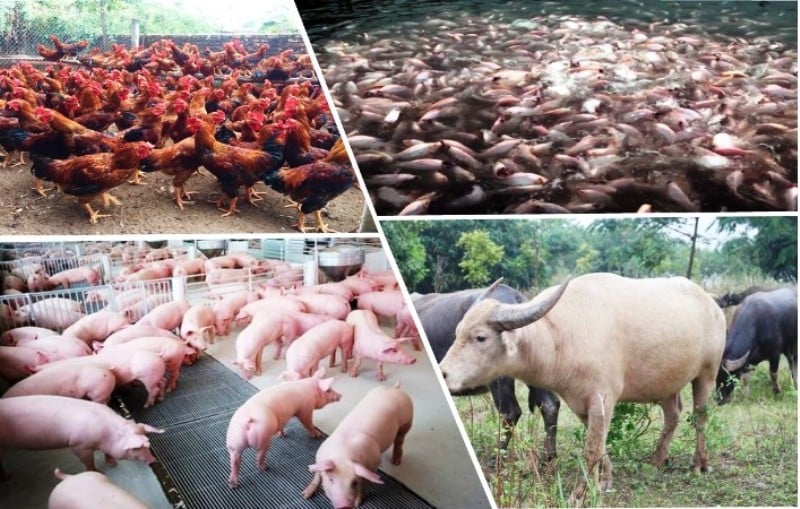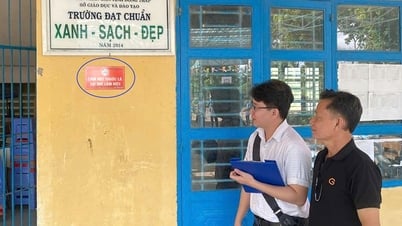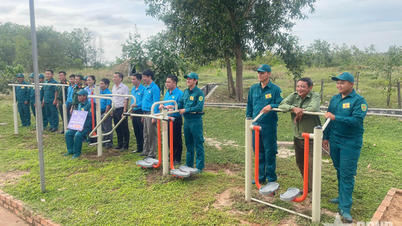
Prepare plans, human resources, materials, vaccines, and chemicals to proactively respond when an epidemic occurs.
According to the Plan, departments, branches and localities must prepare plans, human resources, materials, vaccines and chemicals to proactively respond to dangerous animal epidemics, diseases transmitted between humans and animals, and aquatic diseases, minimizing damage to humans and animals.
Strengthening propaganda, guidance, and mobilizing the entire population to actively participate in safe livestock raising, slaughtering, and processing, and proactively preventing and fighting diseases , especially solutions for vaccinating livestock and poultry, and preventing aquatic diseases.
Organize training and technical guidance to improve professional capacity and skills for district-level veterinary officers, commune veterinary staff, people performing livestock and veterinary work in communes, wards, towns, villages, hamlets, residential groups, forces participating in disease prevention and control; households, livestock farms, aquaculture farms, slaughterhouses, livestock and poultry product businesses, veterinary medicine businesses, veterinary practitioners on disease prevention and control of livestock, poultry and aquatic animals.
Periodically vaccinate terrestrial animals in communes, wards, and towns, in areas with old outbreaks and high risks as determined by local veterinary management agencies. Vaccination time for livestock is 2 main periods (period 1 in March - June; period 2 in September - December). In addition to the main vaccination periods, supplementary vaccination is given to newly emerged livestock and unvaccinated livestock.
Conduct regular and continuous disease surveillance during the breeding process, especially for newly introduced animals, newly raised animals, animals in areas with old epidemic outbreaks, areas with high risk of disease outbreaks as determined by local veterinary management agencies, in order to detect disease cases early to promptly localize and suppress the epidemic, reduce economic losses caused by the epidemic and limit the spread of the epidemic.
Strictly implement regulations on quarantine of animals and animal products; strictly control the transportation of terrestrial animals and animal products and aquatic animals and animal products in circulation in the area.
Organize and effectively manage and implement the control of livestock and poultry slaughter to ensure veterinary hygiene and food safety; organize veterinary hygiene inspections at terrestrial animal breeding facilities, markets, slaughterhouses, businesses, trading, and preliminary processing of animals and animal products; and poultry hatcheries.
Building animal disease safety facilities; implementing national programs and plans for animal disease prevention and control, such as: Foot and mouth disease; Rabies; African swine fever; Lumpy skin disease in cattle and buffalo; Avian influenza.
Actively prevent and monitor aquatic diseases. In case aquatic animals show abnormal signs or are suspected of having a disease, organize sampling and testing to determine the causative agent; guide farmers to apply comprehensive treatment measures according to regulations to prevent the disease from spreading widely .
When an epidemic occurs, organize direction, propaganda, take samples for testing to detect pathogens, announce the epidemic; handle and destroy livestock, poultry, aquatic animals, disinfect and sterilize; set up quarantine checkpoints; strictly manage animals raised in the epidemic area while organizing vaccination, disease surveillance and reporting of epidemics according to regulations .
- Plan for disease prevention and control of Livestock, Poultry and Aquaculture 2025 in Yen Bai province.pdf
Source: https://yenbai.gov.vn/noidung/tintuc/Pages/chi-tiet-tin-tuc.aspx?ItemID=36263&l=Tintrongtinh



![[Photo] Readers line up to visit the photo exhibition and receive a special publication commemorating the 135th birthday of President Ho Chi Minh at Nhan Dan Newspaper](https://vphoto.vietnam.vn/thumb/1200x675/vietnam/resource/IMAGE/2025/5/17/85b3197fc6bd43e6a9ee4db15101005b)

![[Photo] Nearly 3,000 students moved by stories about soldiers](https://vphoto.vietnam.vn/thumb/1200x675/vietnam/resource/IMAGE/2025/5/17/21da57c8241e42438b423eaa37215e0e)




![[Infographic] Numbers about the 2025 High School Graduation Exam in Dong Thap Province](https://vphoto.vietnam.vn/thumb/402x226/vietnam/resource/IMAGE/2025/5/17/c6e481df97c94ff28d740cc2f26ebbdc)





















































































Comment (0)